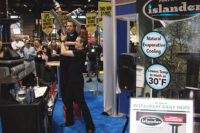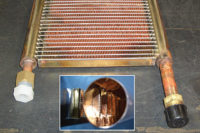In a report issued for the most recent International Trade Fair for Refrigerating and Air Conditioning (IKK) here, the VDKF, a consortium of contractors, said, “An increasing number of companies are pushing their appearance at IKK in the growing segment of room and building air conditioning and systems for higher power ranges.”
VKDF also noted, “Air conditioning systems such as multi-splits can also be used in larger buildings, where traditional air conditioning cannot be used for space and construction reasons.”
Help for Sick Buildings
Such examples in Germany are large office buildings originally built without air conditioning, but now facing Sick Building Syndrome — and the same political and heath fallout as in the United States.The problem is especially acute in the summer months, the report said. Once upon a time, that was solved by taking vacations during most of August. Today, however, many companies are requiring “business as usual” throughout the year.
Further regulations now state that indoor temperatures can no longer be more than 26°C (78.8°F). Relative humidity also needs to be factored in, the report said, noting that 26° and 40% rh is perceived as being cooler to an employee than 24° and 60% rh.
“A relative humidity of more than 60% [and] above 24°C room temperature occurs on about 100 days a year, depending on geographical location,” said the report. “A remedy for this is offered only by dehumidification using air conditioning systems, splits or multi-splits.”
Retrofitting with traditional mechanicals is hampered because of the extent of piping needed, as well as the height of buildings — thus the move to splits.
“The number of split air conditioners installed in Germany is approximately 120,000 per year,” said the report. “Whereas the growth rates for split air conditioners are certainly in the two-figure range, three-figure growth rates are possible in some cases for multi-split systems based on the variable refrigeration flow (VRF) as air-to-air heat pumps.”
VRF systems “offer a cost-effective air conditioning system distinguished by low energy costs. In addition, the systems also reduce CO2 emissions by 30% compared with oil and gas.”
Therefore, the contractors’ report casts its vote for VRF multi-splits “as ideal for heating and cooling large buildings.”
Publication date: 11/13/2000



